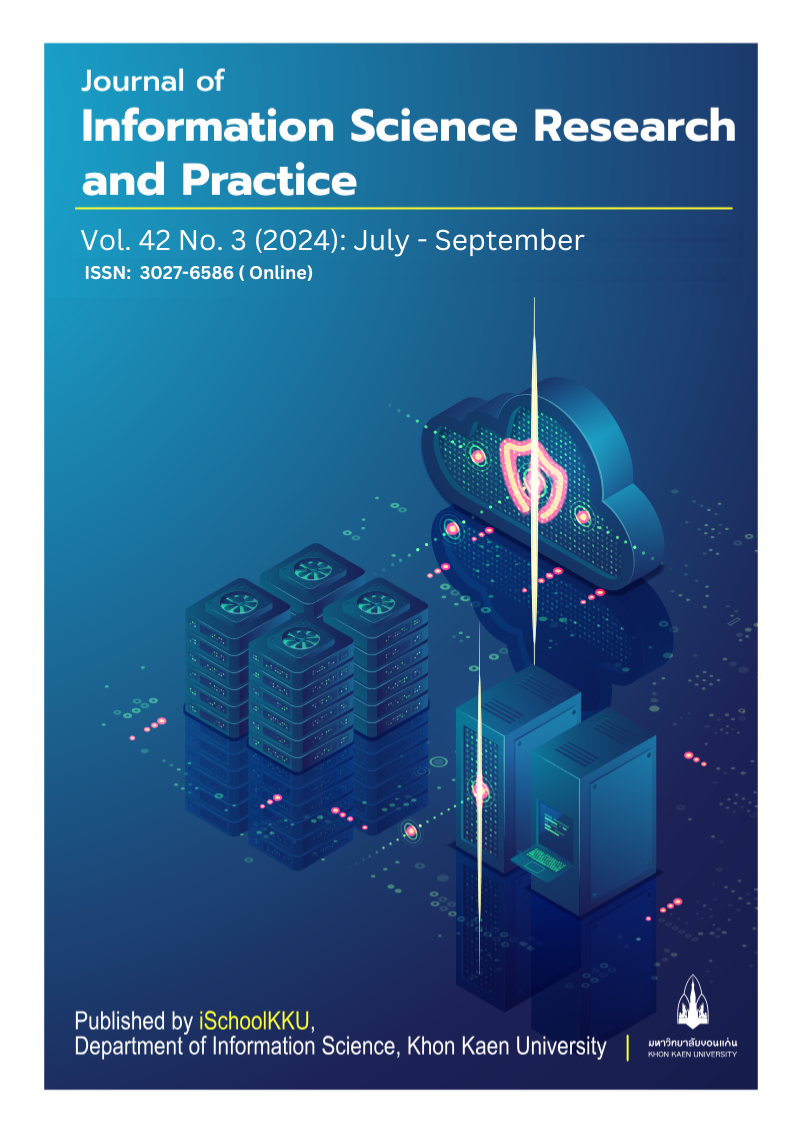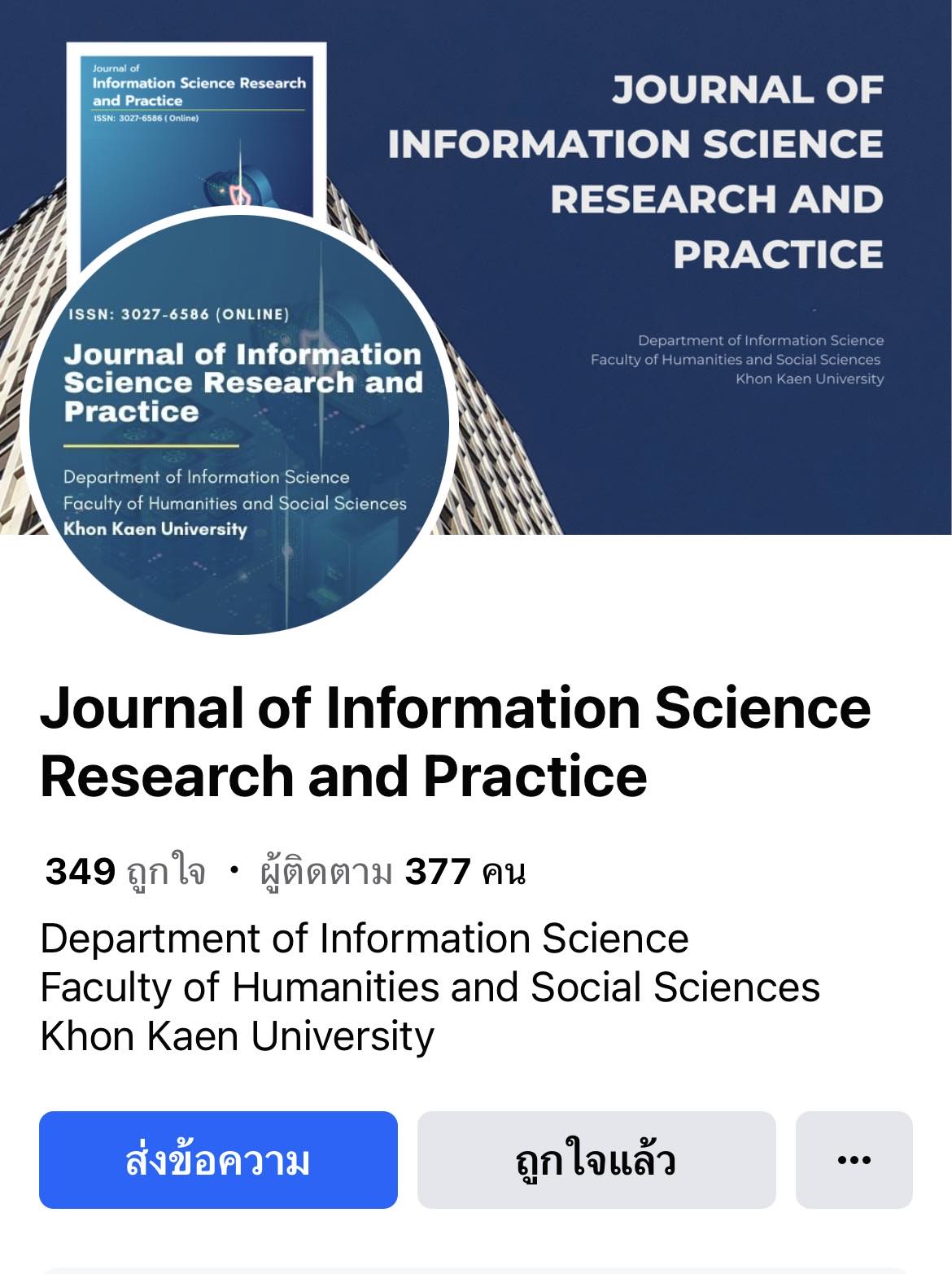Comparative Analysis of ARIMA and LSTM Models for Forecasting Bitcoin Prices: A Machine Learning Approach
DOI:
https://doi.org/10.14456/jiskku.2024.22Keywords:
Bitcoin Price Forecasting, Time Series Analysis, LSTM Model, ARIMA Model, Forecasting AccuracyAbstract
Purpose: The purpose of this study is to evaluate the effectiveness of ARIMA and LSTM models in forecasting Bitcoin prices. This research aims to identify which model provides the highest accuracy and is best suited for application under varying market conditions. Additionally, it seeks to determine the model’s ability to adapt to and respond to market dynamics and the volatile nature of cryptocurrency prices.
Methodology: The researchers conducted a comparative analysis of the performance of two models for predicting Bitcoin prices: the ARIMA and LSTM models. The study utilized a dataset of Bitcoin prices from 2020 to 2024, sourced from Yahoo Finance. The data was divided into two sets: a training set and a testing set, with an 80:20 split (80% for training and 20% for testing). The prediction outcomes were evaluated using key metrics, including RMSE and MAE, to measure the accuracy and efficiency of each model. This analysis provided insights into the strengths and weaknesses of each model in handling the volatility and uncertainty of the cryptocurrency market.
Findings: The LSTM model outperforms the ARIMA model in terms of accuracy. It is better equipped to capture the price volatility and adapt to market changes, as reflected by lower RMSE and MAE, compared to the ARIMA model. Furthermore, the study indicates that the LSTM model is more suitable for handling complex and volatile datasets, such as cryptocurrency price data, demonstrating superior predictive reliability and performance.
Applications of this study: This comparative study of ARIMA and LSTM models has significant practical applications in the finance and technology sectors. The findings that the LSTM model is superior in capturing market volatility can be leveraged to develop tools that aid investment decisions in the cryptocurrency market. Additionally, this research is beneficial for developers working on automated trading platforms, as improved predictions can lead to better risk management and increased profit opportunities for investors in the cryptocurrency market.
Downloads
References
Bhongchirawattana, U., Sukprasert, A., Paengsab, N., & Saraphap, M. (2023). Cryptocurrency price forecasting for futures using Arima Model. (In Thai). Journal of Management Science Udon Thani Rajabhat University, 5(4), 1-11.
Boonmana, C. & Kulvanich, N. (2017). A comparative prediction accuracy of hybrid time series models. (In Thai). Thai Science and Technology Journal, 25(2), 178-184.
Bukhari, A.H., Raja, M.A.Z., Sulaiman, M., Islam, S., Shoaib, M., & Kumam, P. (2020). Fractional Neuro-Sequential ARFIMA-LSTM for Financial Market Forecasting. IEEE Access, 8, 71326-71338. https://doi.org/10.1109/ACCESS.2020.2985763
Hua, Y. (2020). Bitcoin price prediction using ARIMA and LSTM. E3S Web of Conferences, 218, 01050. https://doi.org/10.1051/e3sconf/202021801050
Junhan, N., & Thongkam, J. (2022). Performance Comparison of ARIMA and Machine Learning Regression Techniques in Time Series Forecasting of Bitcoin Prices. (In Thai). Journal of Science and Technology, Ubon Ratchathani University, 24(1), 62-67.
Latif, N., Selvam, J. D., Kapse, M., Sharma, V., & Mahajan, V. (2023). Comparative performance of LSTM and ARIMA for the short-term prediction of Bitcoin prices. Australasian Accounting, Business and Finance Journal, 17(1), 256-276. https://doi.org/10.14453/aabfj.v17i1.15
Prabpala, S., Tuamsuk, K., & Chansanam, W. (2023). Digital Assets Price Prediction Using Sentiment Analysis on Crowd Trading Idea. (In Thai). Journal of Information Science Research and Practice, 41(3), 73-92. https://doi.org/10.14456/jiskku.2023.21
Rizwan, M., Narejo, S., & Javed, M. (2019). Bitcoin price prediction using Deep Learning Algorithm. Conference: 2019 13th International Conference on Mathematics, Actuarial Science, Computer Science and Statistics (MACS). (1-7). https://doi.org/10.1109/MACS48846.2019.9024772
Yamak, P.T., Yujian, L., Gadosey, P.K. A comparison between ARIMA, LSTM, and GRU for time series forecasting. Proceedings of the 2019 2nd International Conference on Algorithms, Computing and Artificial Intelligence. (49–55). https://doi.org/10.1145/3377713.3377722








